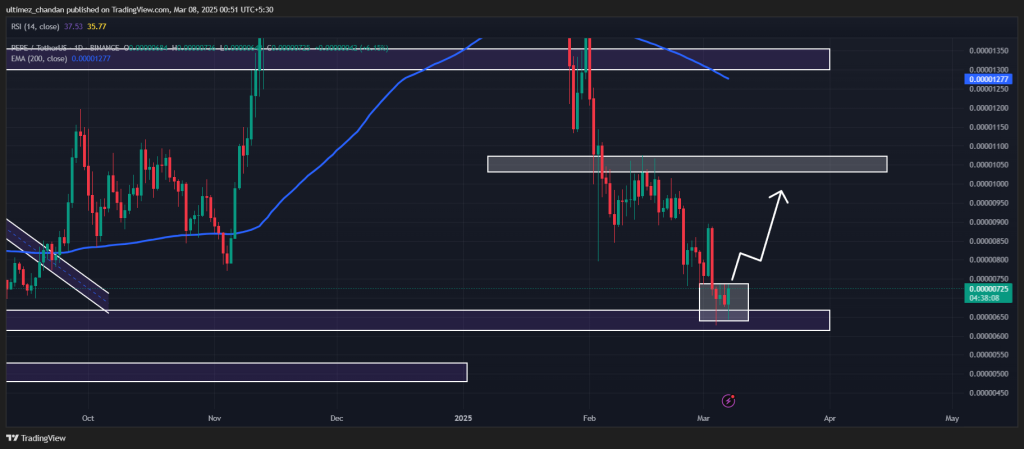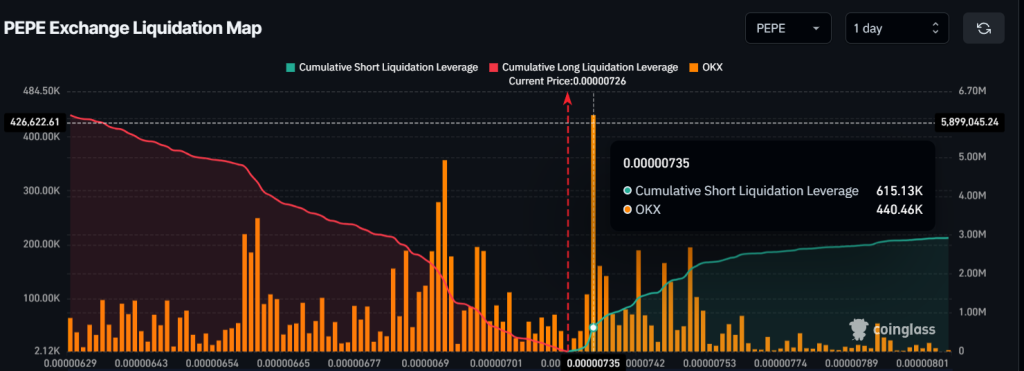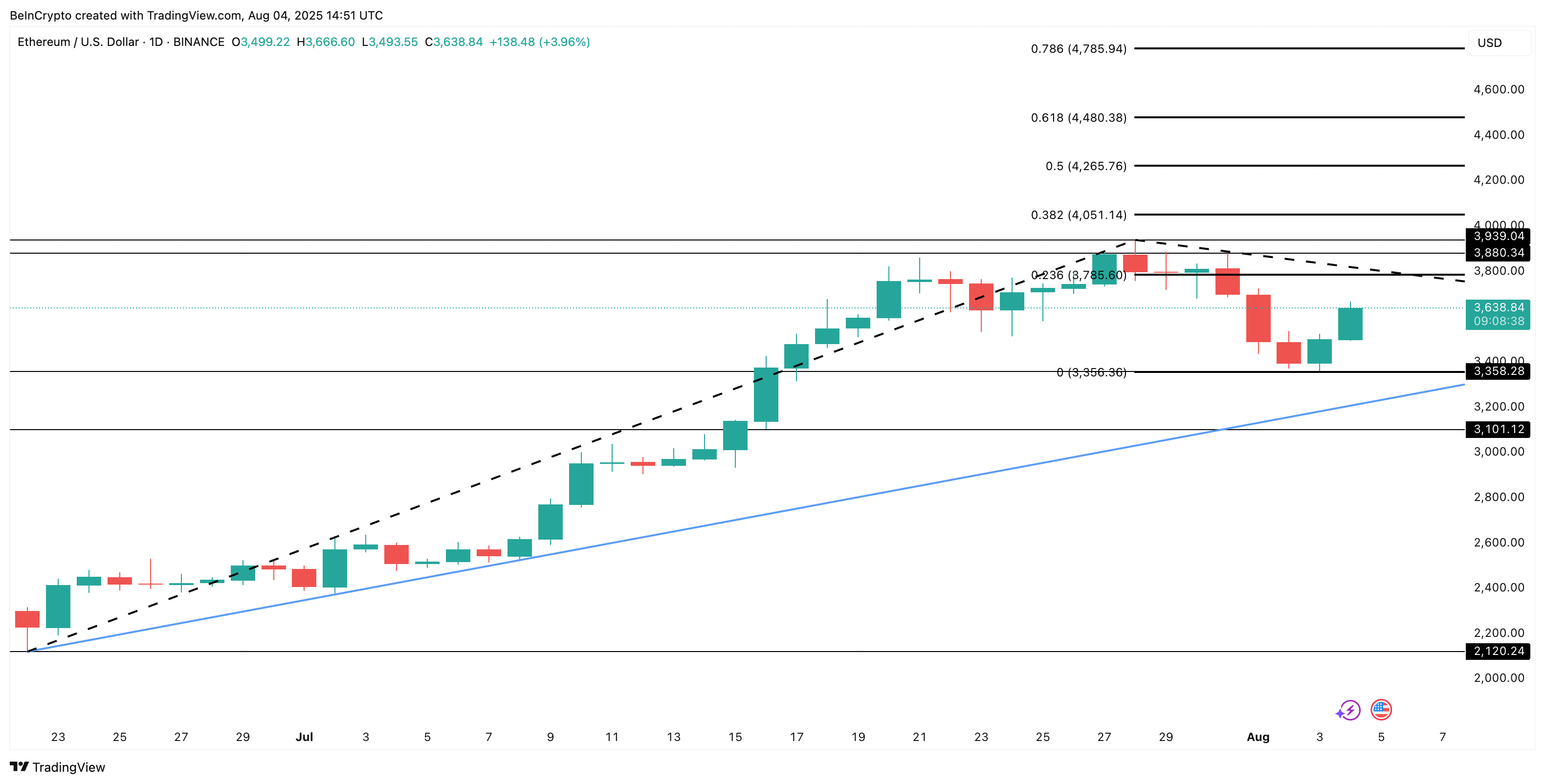
The post PEPE Defies Market Crash, Eyes on 40% Rally appeared first on Coinpedia Fintech News
Pepe (PEPE), the world’s third-largest meme coin, is gaining significant attention from the crypto community due to its impressive upside momentum despite the ongoing bearish market sentiment. On March 8, 2025, while top assets like Bitcoin (BTC), Ethereum (ETH), and XRP are witnessing price declines, PEPE has defied the market trend, registering an impressive 7.5% gain in the past 24 hours.
Current Price Momentum
With this impressive upside momentum, PEPE is currently trading near $0.0000073. Meanwhile, its trading volume has surged by 60% over the same period, indicating heightened anticipation from traders and investors compared to the previous day.
PEPE Price Action and Upcoming Levels
This price surge has pushed the meme coin to the upper boundary of its consolidation range, positioning it for a potential breakout. According to CoinPedia’s technical analysis, PEPE is trading within a narrow zone between $0.0000064 and $0.00000738. However, with today’s price surge, the meme coin is on the verge of breaking out of this pattern.

Based on recent price action and historical momentum, if PEPE breaches this range and closes a daily candle above the $0.0000074 level, there is a strong possibility that it could soar by 40%, reaching $0.0000105 in the coming days.
Despite the recent price gain, the asset is still trading below the 200 Exponential Moving Average (EMA) on the daily timeframe, indicating that it remains in a downtrend.
Traders Bullish Outlook
Data from the on-chain analytics firm Coinglass reveals that bulls are currently dominating the meme coin, as they seem to be strongly betting on the long side. PEPE’s exchange liquidation map shows that $0.00000693 and $0.00000735 are key levels where traders holding long and short positions are over-leveraged.

Currently, they have $1.80 million worth of long positions and $615K worth of short positions. This data clearly showcases that bulls are strong and appear to be supporting the meme coin’s continued upside momentum.















